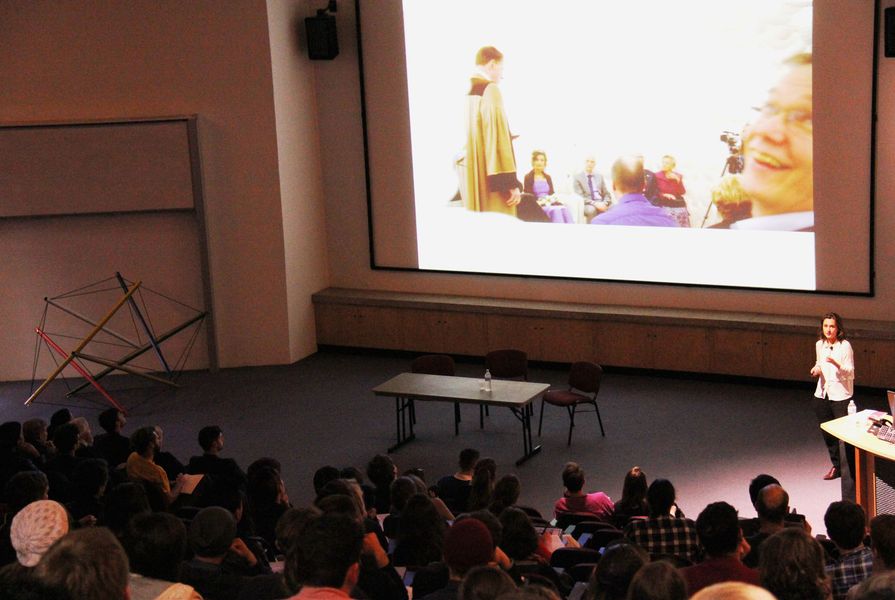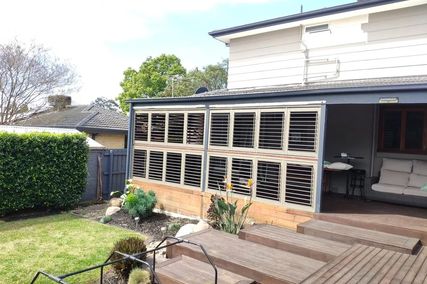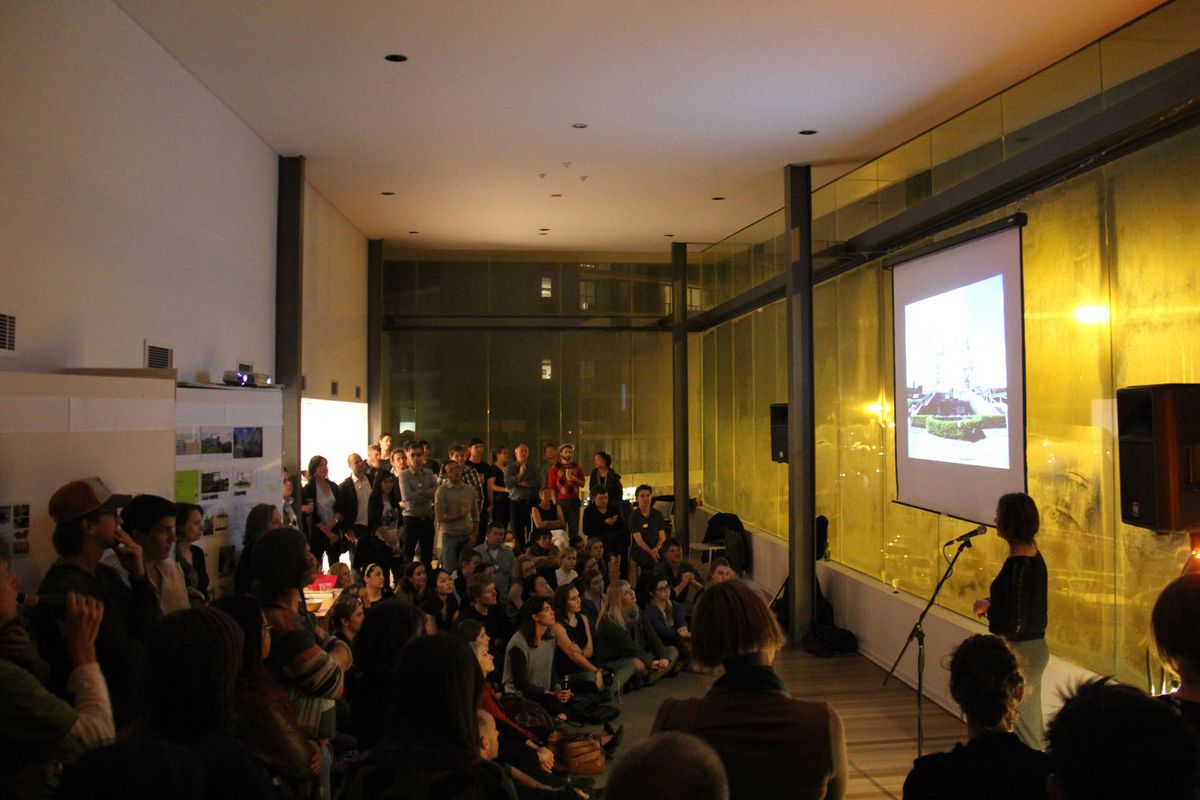Science fiction author William Gibson wrote that “the future is already here – it’s just not very evenly distributed.” Student congresses offer a sneak peek at an unrevealed future before it goes mainstream, an experimental beta test of the attitudes and principles that will define the careers of the greatest of our generation.
Our understanding of the practice of architecture was tested by many of the ideas emerging over the course of the three-day 2013 Nexus National Student Congress in Newcastle, NSW. It was clear to all those in attendance that we were witnessing a foreshadowing of the transition from architect as designer of buildings or masterplanner of cities to architect as facilitator of community process and civic agenda, with design applications as varied as one’s creative imagination. Lindsay Johnston’s brief, improvised summary at the conclusion of the final talk by Clare Cousins conveyed this alternative understanding the most succinctly, describing the future architect as one “trained with a set of skills to find creative solutions for ill-defined problems and to see opportunities for intervention in the everyday.”
Nexus Newcastle offered a multitude of exciting ideas that could take years to penetrate the broader design culture, as each guest speaker delivered their personal, untested thoughts and projects to an uninhibited, optimistic and immensely engaged (if somewhat hung-over) student audience. Perhaps one could read this new mentality as a form of escapism, that we are afraid of a future in which the architect is relegated to the margins of urban activity so we invent new roles for ourselves at the centre of the discussion. Only time will tell; however, it seemed that the relationship between these original, provocative ideas and the resurrected Newcastle host city validated our attractive new rebrand.
Arriving from our respective universities across the country, many newcomers (myself included) perhaps expected more of the typical fare, a showcase of the newest glossy buildings, the familiar imagery cranked into our collective digital platforms every waking moment, accompanied by the unashamedly self-congratulatory narrative spiel of a few unremarkable architects. For many of us, the two-year-old decision to host the congress in Newcastle had appeared to be a strange and arbitrary accident; instead, we felt a distinct connection between content and location almost immediately.
Notions of urban renewal were played out in the streets around us, once languishing under economic stagnation, now vibrant and exciting urban spaces, in part due to the work of Marcus Westbury’s Renew Newcastle initiative. Lessons of local history delivered by Peter Stutchbury could now be read clearly in the urban plan, a grid sympathetic to the natural contours of the existing topography, telling the story of the original owners and the layers of past settlement. A generous offering of fringe events revealed a burgeoning and resourceful art and design community that would be the envy of any modern Australian metropolis. The concluding walking tour, after removing our shoes, allowed our feet to take in the country as our ears took in Les Murray’s poem “The Smell of Coal Smoke” and abstracts from the new gospel of future design, “materials … not products.” It also allowed us to remember that our cities are built on top of a perpetual living archeology and ecosystem, which, we should be mindful, is eager to return given the chance.
If nothing else, Newcastle offered a rich milieu in which the daily presentations could be understood. We were able to project the projects and proposals onto the city around us in our imaginations, constantly testing and conjecturing, piecing together private visions for our own cities. The philosophical discussions surrounding every new idea by each and every speaker stretched early into the morning over pints at the Grain Store and Finnegan’s, and in the dorm room bunks of any hostel that would have us.
As I arrived in town much earlier in the week, my enthusiastic and thoroughly local taxi driver took me by the most indirect route imaginable, gladly announcing every upcoming civic project as we passed rows of hoarding, with the accurate stocktaking of a rigorous town planner. His immensely detailed recollection of local folklore, and an idiosyncratic enthusiasm for the future of his broadly misunderstood home town, gave me the sense that Novocastrians are considering their city with a very long-term vision for positive change. They’re sticking it out. Coming from a city where homes, streets and entire neighbourhoods are understood in terms of their speculative real estate values, people gleefully dancing out of one community and into the next for a modest profit, I found it refreshing to see such loyalty and endurance on display. It’s the necessary ingredient for the beginning of any successful urban revival.
This is what we can all take from Nexus Newcastle, the value of a lifelong dedication to your home and the places and people around you. Now we look forward to the Melbourne congress in 2015, an entirely contradictory urban experience, but one we will now have the tools to read on both the small and large scales of civic placemaking.
Read Sarah Lynn Rees’s Nexus conference review.




















